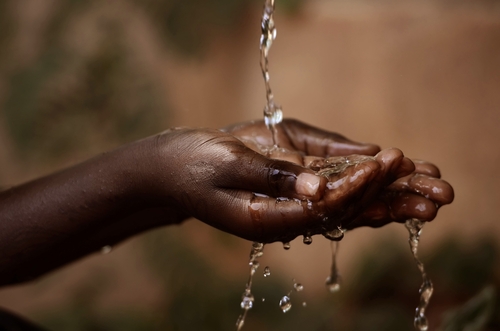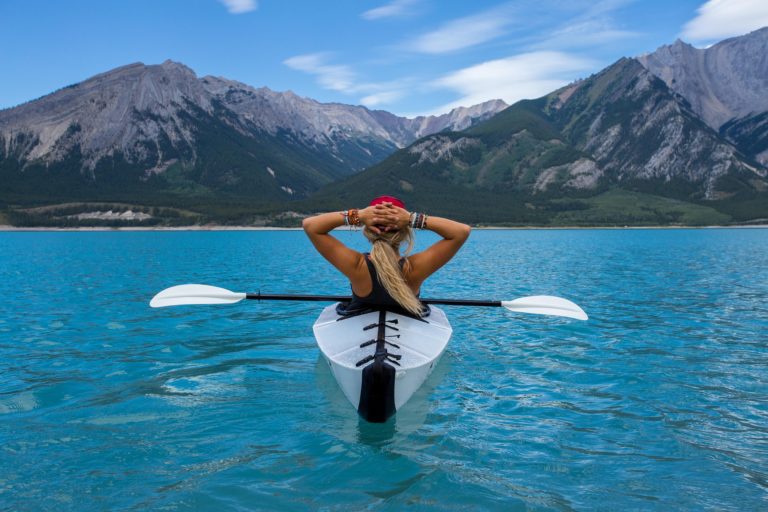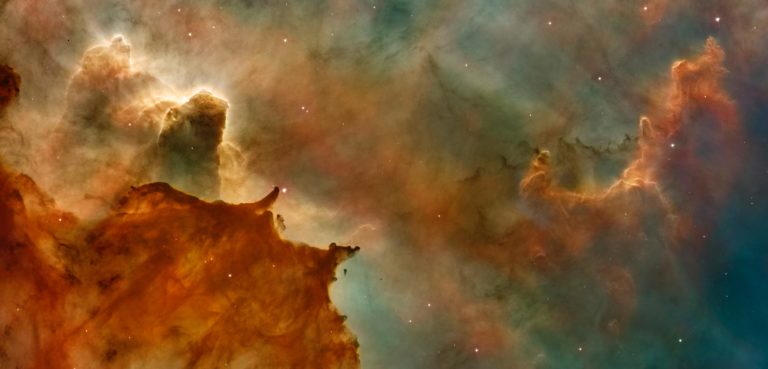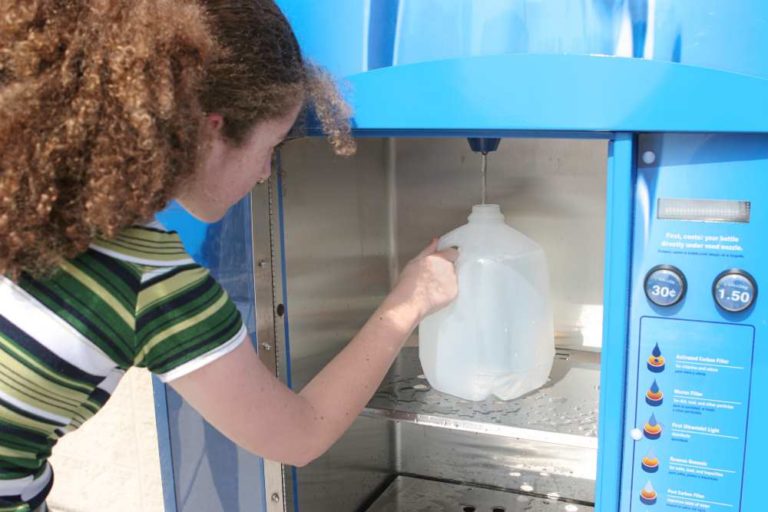
Water for society – Including all
World Water Week, the leading annual event on global water issues, was held in Stockholm from August 25-30, 2019. https://www.worldwaterweek.org World

Share with Friends

You know it’s bad for the environment and you know it’s expensive, but if you’re still drinking bottled water because you enjoy the taste, you might want to look at this bit of news. Some of Canada’s big brands have sold bottled water that smells like “urine,” tastes like “old socks” or reeks of “diarrhea,” according to four years’ worth of government inspection documented in nearly 800 pages by the Canadian Food Inspection Agency (CFIA) reports from 2014 until 2018.
Dasani, owned by Coca-Cola; Real Canadian natural spring water, owned by Loblaws, one of Canada’s largest grocery-store chains; and Refreshe spring water, from the Safeway grocery chain, are just some of the brands whose bottled water has been hit with complaints over foul smells, tastes or unusually high levels of sulphur, the reports said.
Other firms were found to be bottling water in “filthy conditions.” Toronto-area operator Canadian Shield Natural Spring Water was pumping water behind an amusement park with no safety testing facilities, bathroom or hand washing station for employees, one of the inspection reports found.
Are you cringing yet? Although the CFIA said the stinky bottled water some consumers had complained about did not pose a danger, I’m pretty sure that would be a deterrent for most consumers.
Of the 24 complaints investigated by CFIA over four years, only two resulted in voluntary recalls related to health and safety issues according to Elizabeth Griswold, executive director of the Canadian Bottled Water Association.
One was Edmonton-based company All 4 Water and came after blue strands of plastic were found in four-litre jugs of Mountain Park water distributed to 17 locations in Alberta in 2016. The problem was linked to its bottle-capping machine, but it did not alert the public about the voluntary recall of their bottled water.
The other recall involved Island Springs Water Company in Prince Edward Island after unacceptable levels of coliform bacteria were detected in its bottled water in 2015, which was sold directly to consumers and not in retail outlets.
The unsold water from the contaminated batch of 100 bottles was dumped, but water already sold was not recalled. The firm pledged to improve its washing facilities.
It seems that even if the CFIA is not concerned about the quality of the bottled water perhaps we should be. After receiving a complaint in 2015 from a consumer in Manitoba who purchased a bottle of Dasani water at a local supermarket that smelled like “old socks,” CFIA investigators opened five bottles that had come from the same factory in Brampton, Ontario. They agreed the water had an “off odour” that was “very strong.” Although company spokesperson Shannon Denny said that the unusual odour was from additional moisture on the bottles from rinsing prior to being packaged into cases it doesn’t sound reassuring in terms of quality control. From the perspective of a consumer, this level of off-putting odour could signal even worse problems that have not even been detected.
In 2015, a customer went shopping for Real Canadian bottled water at a No Frills store in Vancouver and found that the “water smells like poo” and wrote to the CFIA. Although the company exchanged the bottles, the second pack had the same problem.
Half a dozen similar complaints were found in the CFIA database about bottled water sold by No Frills parent company Loblaw Companies Ltd. at various stores. Consumers reported that the Real Canadian water they had bought smelled like “garbage,” “diarrhea” and “toilet water.”
Those smells “are typically associated with spoilage microorganisms and are not considered [indicative of] pathogens of public health concern,” the CFIA said. If we as consumers are being urged to be unconcerned by bottled water that smells like poo then I wonder what we should be concerned about. Yikes!
The cause of the smelly water in the bottles likely came from a compressed air filtering system in the facility that produced the water, according to CFIA files. The air tank was replaced with a new system later in 2015 but again begs the question about quality control and standards of safety.
A person who purchased a case of Refreshe spring water at a Safeway in British Columbia in 2014 said it smelled like “urine” or “sulphur” and was subsequently offered a $50 certificate to the grocery store chain after making a complaint. The person contacted the CFIA. Samples were sent to experts at the University of Guelph, who concluded that the proportion of sulphur was unusually high.
When presented with the lab report, a spokesperson for the bottling company said: “To be honest with you, we have no idea why it is high. Concerning our source, nothing changed, and all the parameters are good.”
If these are the cases that are apparent to the naked
eye, or rather the naked nose, what about those that are not so immediately affronting
but are equally suspicious? Unless something is as obvious as blue strands of
plastic or water that smells like urine, we may not actually know what exactly
is in those bottles of water that consumers are paying the big bucks for.
So what’s the alternative? Most discerning consumers know that water right out of the tap may be safe to drink but may not taste very good. Plus it’s also masking a cocktail of chemicals, pesticides and heavy metals. Pesticides, pharmaceuticals, antibiotics and hormones have also been detected as they often get flushed down the toilet and end up in our waterways. Some studies have found traces of antibiotics, hormones and painkillers in our tap water. A particular concern is that men are increasing their estrogen levels through drinking tap water due to many of the hormone replacement therapies that are getting flushed down the toilet.
In addition to all of these chemicals we also add fluoride to our water with the aim of protecting children’s teeth. You may have grown up with it and just take it for granted, but we would be aghast if we discovered that the city was adding any other medicine to our water supply for pharmaceutical purposes.
Just some of the most popular pesticides and herbicides detected in our water include: glyphosate and atrazine, 2,4-D.
Some of the most hazardous metals detected include: antimony, linked to microscopic changes in organs and tissues; arsenic, linked to cancer of the lungs, bladder, liver and skin; barium, linked to high blood pressure and cardiovascular disease; boron, linked to reproductive effects, cadmium, linked to kidney damage, as well as lead, mercury, selenium and uranium.
Recently microplastics and microbeads have found their way into our water table and are showing up in our drinking water and even in tap water. Microplastics come from a variety of industrial and waste sources, including from larger plastic debris that degrades into smaller and smaller pieces. In addition, microbeads, a type of microplastic, are very tiny pieces of manufactured polyethylene plastic that are added as exfoliants to health and beauty products, such as some cleansers and toothpastes. These tiny particles easily pass through water filtration systems and pose serious health risks.
The answer to this water dilemma is perfectly clear – purified and filtered tap water. There are simple and affordable solutions to ensure that the water that your body needs is clean and fresh and as free from chemical, organic and plastic contaminants as possible. Best Water filtration systems remove from 5 microns to as small as .1 microns of fibers. Since most of the fibers are 10 microns in size, these filters would remove almost all of the plastic fibers from tap water. Also our specialty filters such as the bone char fluoride removal filter can provide an additional level or filtration to any system.
Our ionizers and filters ensure that the water that you’re drinking is not only pure but it tastes (and smells) fresh and clean,
For instance, The UltraStream ionizer has eight layers of filtration and energizing media to ensure the cleanest most vital water that your body can benefit from. UltraStream removes more harmful contaminants than ionizers ten times the price including bacteria, pesticides, heavy metals and fluoride and chlorine. Not only does it removes these harmful chemicals but it puts in beneficial hydrogen gas, magnesium, calcium and ph balancing alkalinity.
Drinking clean, mineralized water is not only good for your health, it tastes great! The UltraStream works exactly like nature to filter, alkalise and naturally energize water returning it to its most natural state. With water this delicious you’ll want to drink more water, more often.
The UltraStream has no transformer, internal plumbing, flow sensors, diodes or any other electronic parts so that it is completely maintenance free. Every time you install a new filter you virtually get a new water alkalizer and H2 system. The UltraStream is sleek and elegant to fit any style kitchen and simple to install. The freestanding model is easy to transport for holiday travel, campers and cottage.
Take a look at our full range of ionizers and filters which now infuse dissolved hydrogen (the superfood of water) into every drop. Find us online www.waterionizer.org or call 1-877-771-1942 to speak to one of our water experts to get more information to help you decide which system is best for you and your healthy lifestyle.
Share with Friends

Julia Abelsohn is a writer, editor and clinical aromatherapist. She has been sharing her expertise and passion for health and wellness for over 25 years. When not at her desk she can be found exploring the many trails and green spaces near her home in Edmonton, Alberta.
Featured
Drink healthy, hydrogen-enriched water on the go with the AOK 808
The only USA-made water ionizer filter that has certified independent test results for reducing 172 contaminants by 99.9%.
World’s most advanced natural filter, alkalizer, ionizer and hydrogen system all in one affordable package.
Follow Us
Latest Posts

World Water Week, the leading annual event on global water issues, was held in Stockholm from August 25-30, 2019. https://www.worldwaterweek.org World

It’s Saturday morning, the sun is shining and it’s a perfect day to go out for a paddle. You grab

Since time immemorial scientists, philosophers and even us mere mortals have asked the question: are we alone in the universe?
Popular Posts

Water vending machines are as common in grocery stores as ATM machines but what kind of water are they really
For over 20 years, thousands of customers worldwide rely on Best Water for our excellent one-to-one support, high quality water ionizer products and competitive pricing. If you have any questions at all please call us. Our experienced techs are ready to help! Learn more about us.
© 2019 Best Water Inc. All Rights Reserved. Website & Branding by Elite Web Design